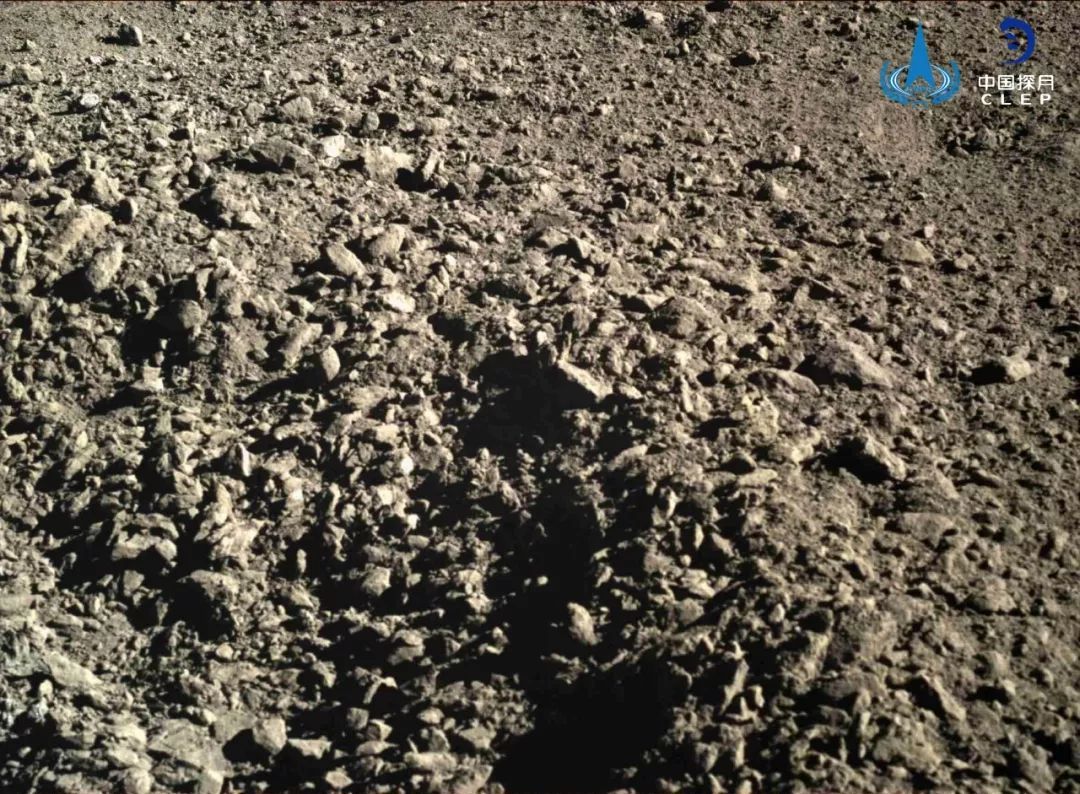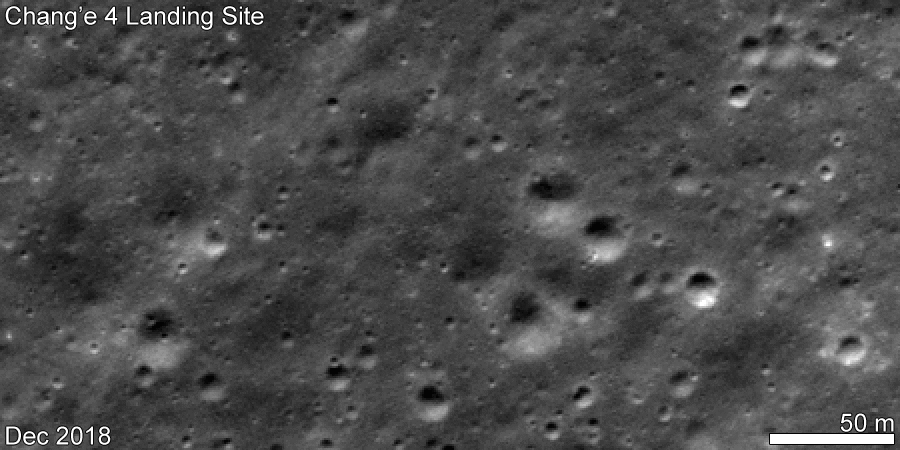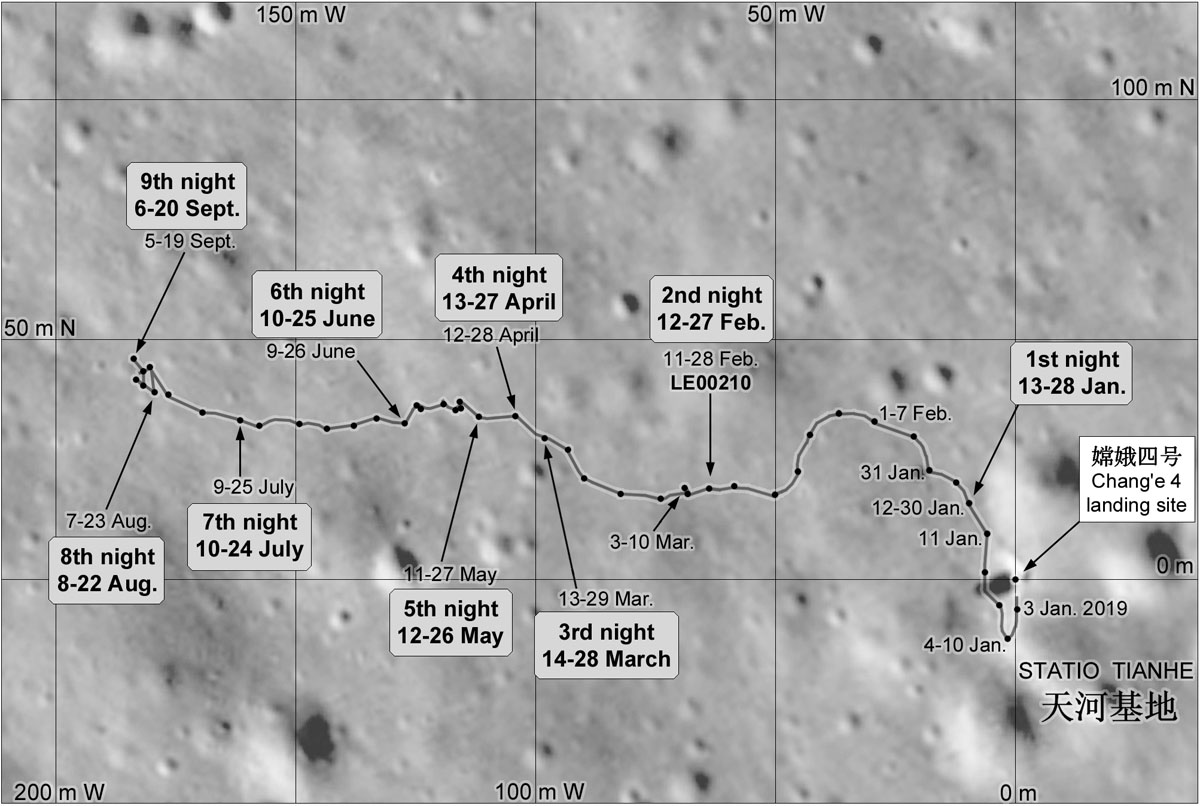China's Chang'e 4 Completes 10 Lunar Days on Far Side of the Moon
On mission day 10, Yutu 2 covered its shortest distance yet, but the rover seems to be performing well.

China's Chang'e 4 mission has completed 10 lunar days of activity on the far side of the moon, returning new images and carrying out science tasks.
Both the Chang'e 4 lander and the Yutu 2 rover entered a dormant state on Oct. 5 in preparation to survive a 10th lunar night. During the roughly two-week-long lunar night, temperatures can drop to as low as minus 310 degrees Fahrenheit (minus 190 degrees Celsius), threatening the spacecraft's health every time.
The rover and the lander began lunar day 10 on Sept. 22 and 23, respectively, according to the Chinese Lunar Exploration Program. Yutu 2 drove just 16.7 feet (5.1 meters) on day 10 — the shortest distance it has covered during a single day.
Related: Chang'e 4 in Pictures: China's Mission to the Moon's Far Side
The short distance may indicate that the rover is busy carrying out further analyses of an unusual material it discovered at the center of an impact crater during its eighth day of work. The Chang'e 4 team has released few details, but lunar scientists have suggested that the substance could be impact melt glass from meteor strikes.
Yutu 2's predecessor, the Chang'e 3 mission Yutu rover, lost mobility during its second lunar day. While the apparent short-circuit issue that prematurely halted the first Yutu has been addressed, Yutu 2 is in uncharted territory regarding the wear and tear experienced from traversing the harsh lunar surface.
The rover has covered a total of 950 feet (289 m) and is heading west from Statio Tianhe, the formal name of the Chang'e 4 landing site. The Yutu 2 rover was designed to last three months but has greatly exceeded this expectation.
Get the Space.com Newsletter
Breaking space news, the latest updates on rocket launches, skywatching events and more!

China has not issued regular maps of Yutu 2's roving. But Philip Stooke, a cartographer at the Centre for Planetary Science and Exploration at Western University in Ontario, Canada, has pieced together information from papers in science journals and occasional hints on social media to illustrate the route taken by the rover.
NASA's Lunar Reconnaissance Orbiter has imaged the Chang'e 4 spacecraft a number of times while passing overhead. Some of the images even show the tracks made by Yutu 2.
Chang'e 4 made its historic touchdown in Von Kármán crater on Jan. 3, becoming the first robotic mission to land softly on the far side of the moon. Yutu 2 was deployed about 12 hours after landing.

An Oct. 6 update from the China Lunar Exploration Program via its Weibo social media account states that both spacecraft and their science payloads are working well.
The two spacecraft have been carrying out a range of measurements using neutron detectors, radiation instruments, infrared spectrometers and radio devices. Data gathered by the Chang'e 4 lander and Yutu 2 rover are providing insight into the nature and history of the far side of the moon.

The far side of the moon is never visible from Earth because of tidal locking, so contact with the two Chang'e 4 spacecraft is facilitated by the Queqiao communications satellite. That spacecraft orbits a special, gravitationally stable point beyond the moon.
Sunrise over the landing site in Von Kármán crater will occur Oct. 21; Yutu 2 will wake for lunar day 11 on Oct. 22 and the lander will do so about 24 hours later.
- Photos from the Moon's Far Side! China's Chang'e 4 Lunar Landing in Pictures
- NASA Probe Spots China's Chang'e 4 Lander on Far Side of the Moon (Photo)
- Moon Photos by China's Chang'e 2 Lunar Orbiter (Gallery)
Follow Andrew Jones at @AJ_FI. Follow us on Twitter @Spacedotcom or Facebook.
Join our Space Forums to keep talking space on the latest missions, night sky and more! And if you have a news tip, correction or comment, let us know at: community@space.com.

Andrew is a freelance space journalist with a focus on reporting on China's rapidly growing space sector. He began writing for Space.com in 2019 and writes for SpaceNews, IEEE Spectrum, National Geographic, Sky & Telescope, New Scientist and others. Andrew first caught the space bug when, as a youngster, he saw Voyager images of other worlds in our solar system for the first time. Away from space, Andrew enjoys trail running in the forests of Finland. You can follow him on Twitter @AJ_FI.









